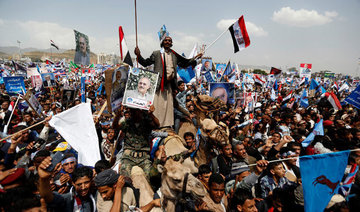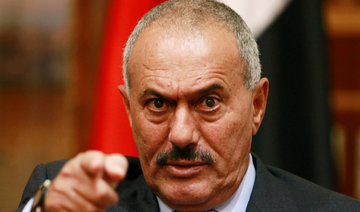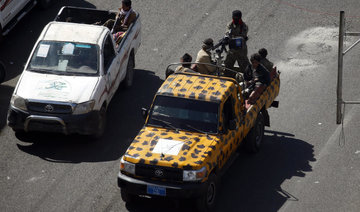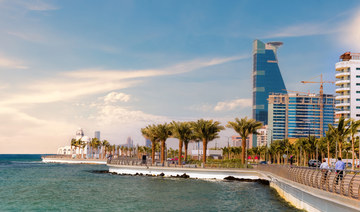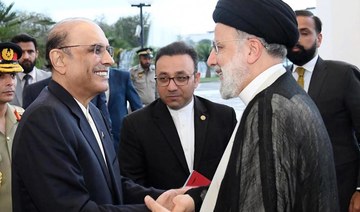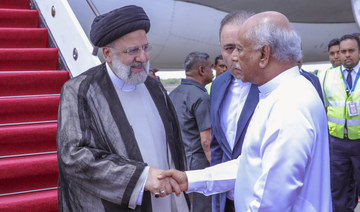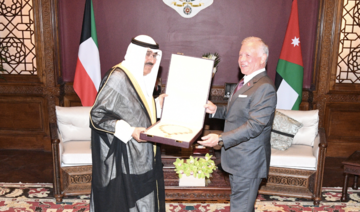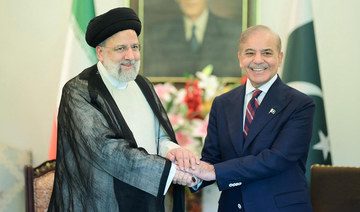SANAA: Ali Abdullah Saleh survived for decades as Yemen’s strongman, the master of shifting alliances, playing both sides — or flipping sides freely — in the multiple guerrilla conflicts and civil wars that tore apart his impoverished nation throughout his life. But his last switch proved his end.
Saleh, who was Yemen’s president for 33 years until he stepped down in 2012 amid an Arab Spring uprising, was killed on Monday by Houthi rebels whom he had once allied with in hopes of a return to power but then turned against in recent months.
A video circulating online showed Saleh’s body, his eyes open but glassy, motionless, blood staining his shirt and a gaping wound In his head.
His grisly end recalled that of his contemporary, Libya’s Muammar Qaddafi, whose body was shown being abused by the rebels who killed him in that country’s 2011 civil war.
During his rule, Saleh was known as the man who “dances on the heads of snakes” for his ability to manipulate friends and enemies alike, using patronage, family bonds and brute force. That skill enabled him to stay on top in the Arab world’s poorest nation and one of its most unstable, where tribal and regional alliances and the sheer geography of mountains and deserts made central rule weak.
In the 2000s, Saleh was a vital ally of the US in fighting Al-Qaeda’s branch in his country, a top priority for Washington after the branch tried to blow up a passenger jet and carry out other attacks on American soil. Even while taking millions in US aid, Saleh was suspected of striking deals with the militants and enlisting them to fight his battles.
After a popular uprising against his rule erupted in 2011, Saleh cannily managed to hang on to power for months, even surviving a bomb that detonated in the presidential palace mosque as he prayed there, severely burning him. Still, he stayed on, only finally resigning in early 2012 under a Saudi-brokered deal.
As president, Saleh fought multiple wars against the Houthi rebels in their heartland in northern Yemen, each time failing to crush them completely. Then after his fall, he allied with the Houthis against his own former vice president and successor, Abed Rabbo Mansour Hadi — most likely in the hope he could ride them back into power.
Saleh’s loyalist military units helped the Houthis overrun the capital, Sanaa, and much of the north and center of the country. Hadi fled, his government moved to the southern city of Aden, and Saudi Arabia and its allies launched a coalition air campaign in early 2015. Then in recent months, Saleh’s alliance with the Houthis fell apart as the rebels moved to weaken him and Saleh flirted with switching to side with the Saudi-led coalition.
Saleh rose to power in an era when Yemen was divided into two nations, north and south. He was born into a small tribe allied with one of the country’s mightiest clans, Al-Ahmar. He did not stay long in school, leaving before he was a teenager and enlisting in the armed forces. His age was not known for sure. His website gives his birth date as March 21, 1946, but many in Yemen say he was born four years earlier. On the other hand, he just happened to be 40 when he took power in 1978 — when the constitution said the president had to be 40. And in the 2006 election, official statements alternated between saying he was 64 and 65.
Whatever his age, Saleh was ambitious and soon caught the eye of North Yemen’s president, Ahmed bin Hussein Al-Ghashmi, who appointed him military chief in the city of Taiz, south of Sanaa.
Saleh’s moment came after a bomb in a briefcase killed Al-Ghashmi in June 1978. Within a month, Saleh was North Yemen’s president, backed by Saudi Arabia.
His reputation cemented as a tough leader, he also knew how to play Cold War politics. Marxist South Yemen was a Soviet client state, so Saleh reached out to Western leaders to leverage aid for North Yemen.
In 1990, with the Soviet Union unraveling, Saleh negotiated unity with the south, ensuring his place as the president. On May 22, 1990, he raised the flag of the Republic of Yemen at the southern port of Aden. Four years later, he crushed an attempt by the south to break free.
His powerful nexus of the military and tribes made him virtually untouchable. He also sought to harness a dangerous new force in the country. Arab militants who had fought the Soviets in Afghanistan in the 1980s needed a new home, and the deal apparently offered by Saleh was sanctuary in exchange for respecting his authority.
In 2000 that legacy came back to haunt him when the Navy destroyer USS Cole was bombed in Aden harbor, killing 17 American sailors. Washington demanded that Saleh crack down on suspected militants.
Saleh’s efforts against extremist groups were widely criticized as spotty and ineffective.
In 2006, a band of Al-Qaeda militants made a bold escape from a Sanaa prison that US and Yemeni officials believed had help from regime insiders. The band went on to form Al-Qaeda in the Arabian Peninsula, the terror network’s Yemen branch. The group was linked to the attempt to bomb a Detroit-bound airliner on Christmas Day 2009 and shipments of explosive-rigged packages were intercepted in Britain and Dubai in 2010. Still, the US saw little choice but to partner with him.
Key dates in life of veteran
• March 21, 1942: Born to a North Yemen family linked to the Hashid tribal confederation.
• 1962: Joins the army. Takes part in the coup that replaces the Zaidi imamate with an Arab nationalist republic.
• 1978: Following the assassination of President Ahmad Al-Ghashmi, Saleh is elected president of North Yemen by a constituent assembly.
• 1990: He successfully steers the country to reunification with the communist south, becoming president of a unified Yemen.
• 1994: He crushes a secession bid in the south.
• 2004-2010: Saleh fights northern Houthi rebels, who like him belong to the Zaidi minority.
• 2012: Steps down on Feb. 27 after months of demonstrations against his 33-year rule, and after being wounded in a June 2011 attack.
• 2014: Saleh allies himself with his former enemies — the Houthis — who in 2015 seize the capital Sanaa, and briefly Aden in the south, which is quickly retaken by a Saudi-led coalition.
• 2017: Break-up of the alliance between Saleh and Houthi rebels, who shoot him dead on Dec. 4 south of Sanaa after he flees the city.
— AFP
Timeline of conflict since 2011 uprising
SANAA: Timeline of the conflict in Yemen since a 2011 uprising that toppled President Ali Abdullah Saleh, whose former Houthi allies said Monday had been killed.
Inspired by regional uprisings in the Arab Spring, Yemenis take to the streets in early 2011 to demand the departure of Saleh, who has ruled the country with an iron fist since 1978.
November 2011: Saleh agrees in to hand over power in exchange for immunity from prosecution for him and his family, after 11 months of protests and deadly clashes.
February 2012: As Saleh steps down, a presidential election is held. Saleh’s deputy and only candidate Abed Rabbo Mansour Hadi, seen as a man of consensus, is sworn in days later. Efforts to draw up a new constitution for Yemen face difficulties and tensions intensify.
2014: Houthis launch an offensive and push toward Sanaa from their northern stronghold of Saada, aiming to expand a hoped-for autonomy within a future federation.
Sept. 21, 2014: Houthis storm the capital and seize the government headquarters, state radio and military sites after days of clashes. More than 270 people are killed. The rebels, backed by Iran, forge an alliance with forces loyal to Saleh.
January 2015: The rebels and their allies have also taken control of the presidential palace. Hadi flees to Yemen’s second city, Aden, which he later declares as the “provisional capital.”
March 26, 2015: Nine regional countries in a Saudi-led Arab coalition launch operation “Decisive Storm” with airstrikes on the rebels to defend Hadi and his internationally recognized government. They claw back some territory but also have to deal with increasing attacks by terrorists allied to Al-Qaeda and Daesh.
2015 and 2016: The UN and US organize three rounds of fruitless peace talks. Seven truces are agreed, but all are broken.
Aug. 23, 2017: Splits emerge in the rebel camp, with the Houthis calling Saleh a “traitor” after he dismissed the Iran-backed group as a “militia” in a speech. The next day, hundreds of thousands of Yemenis attend a rally marking 35 years since the founding of Saleh’s General People’s Congress (GPC) in a major show of support. The tensions erupt into clashes between the allies in which a colonel loyal to Saleh and two rebels are killed.
Nov. 29: Violence erupts anew in Sanaa, killing and wounding dozens.
Dec. 2: Saleh reaches out to the Saudi-led coalition battling the Houthis, offering to “turn the page” if it lifts a crippling blockade on the country. The Houthis accuse him of staging a “coup against our alliance.”
Dec. 4: President Hadi orders his forces to retake control of Sanaa. The Houthi-controlled Interior Ministry announces the killing of Saleh, 75, as a video emerges showing what appears to be his body.
— AFP
Saleh ruled by shifting alliances as nation crumbled
Saleh ruled by shifting alliances as nation crumbled
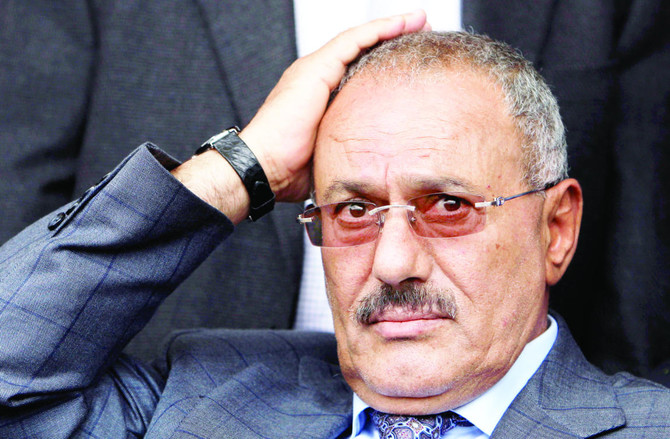
Gaza could surpass famine thresholds in six weeks, WFP official says
“We are getting closer by the day to a famine situation,” said Gian Caro Cirri, Geneva director of the World Food Programme (WFP).
“There is reasonable evidence that all three famine thresholds — food insecurity, malnutrition and mortality — will be passed in the next six weeks.”
A UN-backed report published in March said that famine was imminent and likely to occur by May in northern Gaza and could spread across the enclave by July. On Tuesday, a US official said the risk of famine in Gaza, especially in the north, was very high.
Cirri was speaking at the launch of a report by the Global Network Against Food Crises, an alliance of humanitarian and development actors including United Nations agencies, the World Bank, the European Union and the United States.
In its report, the network described the 2024 outlook for the Middle East and Africa as extremely concerning due to the Gaza war and restricted humanitarian access, as well as the risk of the conflict spreading elsewhere in the region.
“As for Gaza, the conflict makes it difficult and sometimes impossible to reach affected people,” Cirri said.
“We need to scale up massively our assistance... But under the current conditions, I’m afraid the situation will further deteriorate.”
The United Nations has long complained of obstacles to getting aid in and distributing it throughout Gaza in the six months since Israel began an aerial and ground offensive against Gaza’s ruling Islamist militant group Hamas.
Israel has denied hindering supplies of humanitarian aid and blames aid agencies for inefficiencies in distribution.
Israel’s military campaign has reduced much of the territory of 2.3 million people to a wasteland with a humanitarian disaster unfolding since Oct. 7, when Hamas ignited war by storming into southern Israel.
Cirri said that the only way to steer clear of famine in Gaza was to ensure immediate and daily deliveries of food supplies.
“They’ve been selling off their belongings to buy food. They are most of the time destitute,” he said.
“And clearly some of them are dying of hunger.”
Jordan King, Kuwait Emir stress on importance of reducing regional tensions, avoid escalation
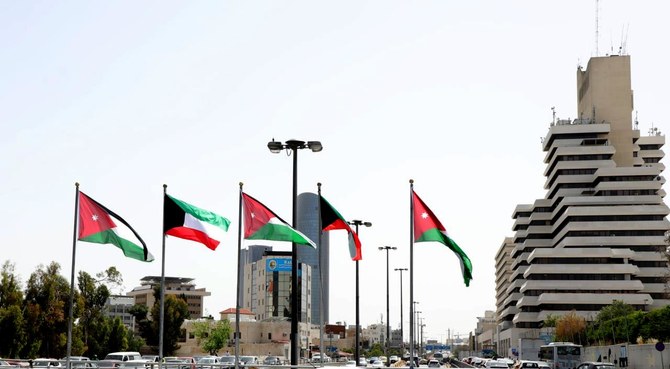
DUBAI: King of Jordan Abdullah II and Emir of Kuwait Sheikh Mishal Al-Ahmad Al-Jaber Al-Sabah stressed on the importance of reducing tensions in the Middle East and avoiding military escalation, according to Petra News Agency.
A joint Jordanian-Kuwaiti statement was issued on Wednesday after the Emir’s two day state visit to the Kingdom.
Both leaders discussed ways to enhance a joint Arab action aimed at confronting emerging regional challenges as well as serving common Arab issues.
The leaders affirmed their support for any steps that ensure the security and stability of the region and stressed the importance of giving priority to dialogue and diplomatic solutions in resolving differences and conflicts.
Their Majesties and Highnesses discussed reaching a just solution to the Palestinian issue and implementing the two-state solution.
The discussions also included talks on investment and tourism, as well as ways to increase trade between Jordan and Kuwait.
Iran cuts Syria presence after strikes blamed on Israel: monitor
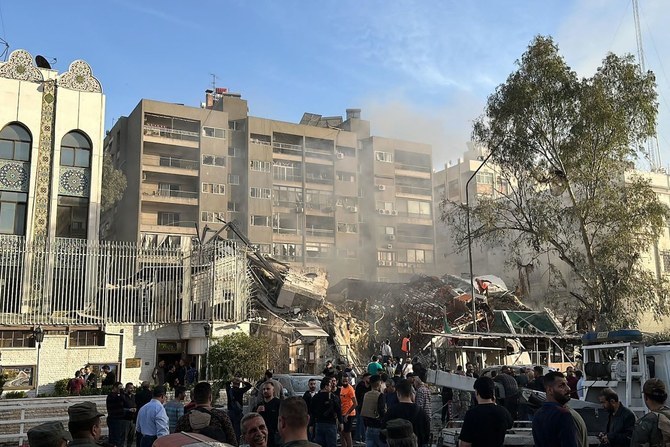
- Iran withdrew its forces from southern Syria, including both Quneitra and Daraa provinces
- Iran has said repeatedly that it has no combat troops in Syria, only officers to provide military advice and training
BEIRUT: Iran has reduced its military footprint in Syria after a succession of strikes blamed on Israel, a source close to Iran-backed militant group Hezbollah and a war monitor said Wednesday.
Iran has provided military support to Syrian government forces through more than a decade of civil war but a series of strikes targeting its commanders in recent months has prompted a reshaping of its presence, the sources said.
“Iran withdrew its forces from southern Syria,” including both Quneitra and Daraa provinces, which abut the Israeli-annexed Golan Heights, the source close to Hezbollah said.
But it still maintains a presence in other parts of the country, the source added.
Recent months have seen a series of strikes on Iranian targets in Syria, widely blamed on Israel, culminating in an April 1 strike that levelled the Iranian consulate in Damascus and killed seven Revolutionary Guards, two of them generals.
That strike prompted Iran to launch a first-ever direct missile and drone attack against Israel on April 13-14 that sent regional tensions spiralling.
But Iran had already begun drawing down its forces after a January 20 strike that killed five Revolutionary Guards in Damascus, including their Syria intelligence chief and his deputy, the source close to Hezbollah said.
Britain-based war monitor, the Syrian Observatory for Human Rights, said Iranian forces had withdrawn from Damascus and southern Syria.
Iran-backed Lebanese and Iraqi fighters had taken their place, Observatory chief Rami Abdel Rahman said.
Iran has said repeatedly that it has no combat troops in Syria, only officers to provide military advice and training.
But the Observatory says as many as 3,000 Iranian military personnel are present in Syria, supported by tens of thousands of Iran-trained fighters from countries including Lebanon, Iraq and Afghanistan.
Abdel Rahman said that many of Iran’s advisers had left Syria over the past six months, although some remained in Aleppo province in the north and in Deir Ezzor province in the east.
Jordan King issues decree to hold parliamentary elections - state TV
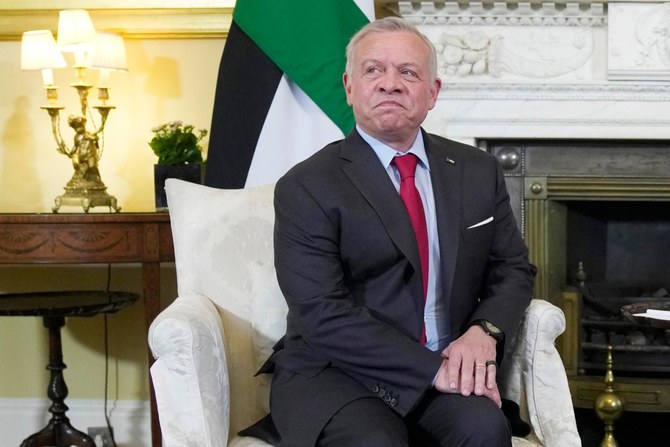
DUBAI: Jordan’s King Abdullah issued a royal decree on Wednesday announcing that a parliamentary election will be held, state TV said.
Under the constitution, the multi-party election is usually held within four months of the end of a four-year term of parliament. The country’s last election, with over 4.6 million eligible voters, was held in November 2020.
An independent election commission decides the exact date.
Iran, Pakistan urge UN Security Council to take action against Israel
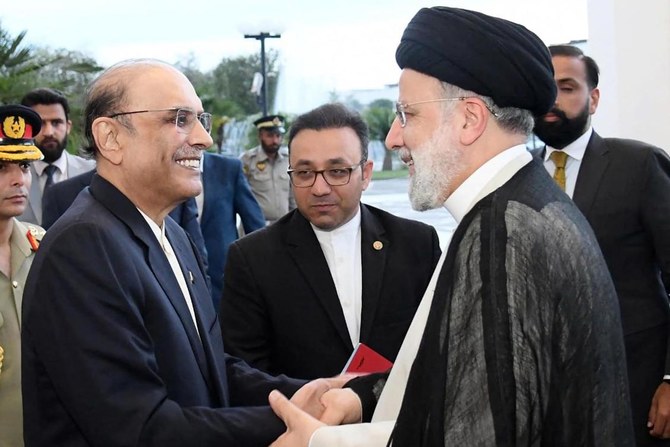
- The joint statement followed a three-day visit to the country by Iranian President Ebrahim Raisi
- Muslim neighbors Iran and Pakistan are seeking to mend ties after unprecedented tit-for-tat military strikes this year
ISLAMABAD: Iran and Pakistan called on the United Nations Security Council in a joint statement issued on Wednesday to take action against Israel, saying it had “illegally” targeted neighboring countries and foreign diplomatic facilities.
The joint statement, released by Pakistan’s foreign ministry, followed a three-day visit to the country by Iranian President Ebrahim Raisi at a time of heightened tensions in the Middle East.
Explosions were heard last Friday over the Iranian city of Isfahan in what sources said was an Israeli attack. However, Tehran played down the incident and said it had no plans for retaliation.
“Recognizing that the irresponsible act of the Israeli regime forces was a major escalation in an already volatile region, both sides called on the UN Security Council to prevent the Israeli regime from its adventurism in the region and its illegal acts attacking its neighbors...,” Iran and Pakistan said in their joint statement.
Muslim neighbors Iran and Pakistan are seeking to mend ties after unprecedented tit-for-tat military strikes this year.
Raisi, who wrapped up his visit and flew on to Sri Lanka on Wednesday, vowed to boost trade between Iran and Pakistan to $10 billion a year.
During his visit to Pakistan, Raisi was quoted by Iran’s official IRNA news agency as saying any further Israeli attack on Iranian territory
could radically change the dynamics and result in there being nothing left of the “Zionist regime.”
On April 13, Tehran launched a barrage of missiles and drones at Israel in what it said was retaliation for Israel’s suspected deadly strike on the Iranian embassy compound in Damascus on April 1, but almost all were shot down.
Pakistan has previously called for de-escalation by “all parties.”
Iran and Pakistan vowed during Raisi’s visit to boost trade and energy cooperation, including on a major gas pipeline deal that has faced delays due to geopolitical issues and international sanctions.


